This article was medically reviewed by Luba Lee, FNP-BC, MS. Luba Lee, FNP-BC is a Board-Certified Family Nurse Practitioner (FNP) and educator in Tennessee with over a decade of clinical experience. Luba has certifications in Pediatric Advanced Life Support (PALS), Emergency Medicine, Advanced Cardiac Life Support (ACLS), Team Building, and Critical Care Nursing. She received her Master of Science in Nursing (MSN) from the University of Tennessee in 2006.
There are 13 references cited in this article, which can be found at the bottom of the page.
This article has been viewed 131,858 times.
Excessive bleeding can be a life-or-death situation. If you’re helping someone with uncontrollable bleeding, you may need to make a tourniquet for a limb. A tourniquet is a compression device, usually a soft and flexible strip of material, that is wrapped loosely around an arm or leg and twisted to tighten it, to control bleeding below that point. When using a tourniquet, never use a narrow strip, wire, or cord, which could cut or slice skin and muscle when tightened.[1]
Steps
First Aid for a Bleeding Wound
-
1Be ready to try pressure before applying a tourniquet. Your job is to stabilize the victim and keep them from bleeding out. Whenever you find yourself in an emergency situation where someone is bleeding profusely, pouring (or even spurting) blood, always try to apply direct pressure first to stop the bleeding. If pressure does not work, you can quickly consider whether to use a homemade tourniquet. Only make and use a tourniquet if the bleeding refuses to stop despite pressure.[2]
- A tourniquet should only go on limbs, such as arms or legs. Never use a tourniquet on someone’s neck or torso.
-
2Call 911 or other emergency services as soon as you can. As soon as you can safely do so, call your local emergency number.[3] The sooner professional help arrives, the better the injured person’s chances of surviving! If you are alone with the bleeding victim, put the phone on speaker so you have your hands free to start doing first aid.
- If there is someone else present at the scene, ask one person specifically to call 911 while you assess and deal with the wound. If you are in a group, do not simply say, "Someone call 911!" Look at someone directly and say, "You! In the green jacket! Call 911!"
Advertisement -
3Examine the wound to determine how serious it is. To decide exactly what to do to a wound, you need to figure out what kind of wound it is. If you can’t see the extent of the wound because of blood, waste no time. Remove or cut away any clothing or jewelry covering the wound, only as necessary. However, if there is debris stuck in the wound, do not remove it. Leave anything jabbed or forced into the wound alone for emergency services to handle.[4]
- If you have the time and resources, wash your hands or grab medical gloves to help prevent infection or the spread of bloodborne diseases.
-
4Elevate the wound above the person’s heart. Once you get a good look at the wound, elevate the victim’s injury as much as possible. Keep the part of their body that’s wounded above the heart so the blood will not flow as quickly.[5]
- For instance, if they are bleeding from their leg, have them lie down with their leg propped up on your lap, a bag, or some other type of support.
-
5Apply pressure to try to stop the bleeding. Using a clean towel, gauze, t-shirt, or any cloth you have handy, make a compress to place over the bleeding wound. Lay the compress over the wound and press down very firmly.[6]
- If the wound is a shallow cut, then you can apply simple pressure.
- If there is a puncture wound, a fracture that has resulted in bone breaking out of the skin, a gunshot wound, or other, more traumatic injury, you may need to do more than apply pressure. However, applying pressure should always be your first step.
-
6Hold the pressure for at least 15 minutes. When you initially apply the compress, hold the pressure on the wound for a minimum of 15 minutes. If the wound continues to bleed, keep applying pressure as long as you can.[7]
- If the compress becomes soiled with blood, do not remove it. Simply apply an additional compress on top of the soaked one. If you remove the compress, you run the risk of disturbing the blood clots that might have developed over the wound.
- If the cloth is not soaked and it looks as though the bleeding has stopped on a wound that is not serious, you can lift up the cloth to assess the state of the wound.[8]
-
7Watch for signs of shock, such as passing out or rapid breathing. If the wound is bad, the victim may go into shock. Take note of any changes in their behavior or state of consciousness. If you notice signs of shock, call emergency services if you haven’t already. Signs of shock include:[9]
- Passing out or losing consciousness
- Dizziness or lightheadedness
- Weakness or difficulty standing up
- Enlarged pupils
- Pale, clammy, and cool skin
- Rapid pulse or breathing
- Acting less alert or less aware, a change in how the person responds to questions, or an increase in confusion, fear, or restlessness
Correct Tourniquet Application
-
1Use a tourniquet if pressure doesn’t work. If pressure doesn’t stop the bleeding, if you are in the wilderness, if you are unable to call emergency services for some reason, if there are too many injuries to treat with pressure, or you are in some other emergency circumstance, you may need to apply a tourniquet to stop the bleeding of a victim’s wound. You should only ever use a tourniquet as a last tool during an emergency situation.[10]
- Tourniquets can potentially cause serious tissue damage, which is why you should only use one as a last resort.
-
2Familiarize yourself with the risk factors of using a tourniquet. If you find you absolutely need to use a tourniquet to save someone’s life, be aware that there are some complications that can arise. Keep in mind risks such as:[11]
- Tourniquets that are applied too loosely can cause the bleeding to get worse. Arterial blood is under higher pressure than other blood in the body, so if the tourniquet is too loose, it may let arterial blood through while blocking other blood.
- Tourniquets that are released too soon can cause damage to the compressed blood vessels and the bleeding will resume.
- Tourniquets that are left on too long can damage the nerves, muscles, and blood vessels. As a general rule, permanent damage can result if the tourniquet is left on for more than 1 to 2 hours.
- Placing tourniquets on the wrong area, such as too far from the wound or on a joint, can be ineffective.
- Tourniquets, if applied correctly, can be very painful.
-
3Make a tourniquet using a strip of material at least 2 inches (5.1 cm) wide. If you are going to make a proper tourniquet, you need to find the right material for the area that you are using it on. Tourniquets should be at least 2–4 inches (5.1–10.2 cm) wide.[12] Smaller tourniquets should be used on the arm and thicker ones should be used on legs. Rip or cut strips of cloth from a shirt, towel, or bed sheet to make your tourniquet fabric.
- Tourniquets that are too narrow or thin can cut into the skin, while wide tourniquets need to be tied very tightly to be effective.
- Make sure the fabric is not elastic or slippery so it doesn’t move around.
- You can also use readymade tourniquets or objects such as a belt, necktie, t-shirt, or robe tie.[13]
-
4Wrap the fabric around the wounded limb. For the tourniquet to be effective, it must be in the right place. The tourniquet should be 2 inches (5.1 cm) above the wound on the part of the limb closest to the heart. It also must be applied with enough pressure to completely stop arterial blood flow. Do your best to apply even pressure all the way around the limb as you wrap the tourniquet, and keep the material as flat against the skin as possible.[14]
- Do not apply the tourniquet on a joint, such as an elbow or a knee. The blood flow through joints is protected so that it isn’t interrupted when the joint is bent. Instead, try to tie the tourniquet above the elbow or knee joint, in the part of the limb closest to the heart.
- Also, do not apply it over clothing so it won’t slip once tightened.
- Arterial blood flow is the blood that will spurt because of the action of the heart pumping.
- Never tie a tourniquet on any part of the body that isn’t an arm or leg. [15]
-
5Tie the tourniquet securely. Tie the tourniquet using a regular square knot—the same way you’d tie your shoelaces, only without making a bow. Make sure the knot is tight. If you plan to use an object to help along the tightening process, you will need to tie 2 knots. Tie the first knot to place the fabric on the limb. Then, place the 5–8 in (13–20 cm) long piece of wood or smooth metal, called a winch, above that and tie another knot on top of it.[16]
- Make sure the winch is smooth so that it doesn’t cut the person or the tourniquet. It can be a stick, smooth metal utensil, pencil, pen, or other long object.
-
6Tighten the tourniquet. If you are using a belt, tighten the belt as much as possible to stop the bleeding. If using the winch, tighten the tourniquet as much as you can to stop the bleeding by twisting the winch around so the fabric gets pulled tight around the limb. Keep turning until you can’t feel a pulse below the tourniquet.[17]
- Tourniquets on leg wounds need to be tighter than those on the arms because the blood vessels in the legs are larger.[18]
-
7Wait for emergency services before removing the tourniquet. Once you have applied the tourniquet, wait for emergency services. Make sure to record the time the tourniquet was applied. When emergency services arrive, they will need this information. If EMS is delayed, cooling the injured limb with ice or cold packs may help reduce tissue damage while the tourniquet is on.[19]
- Do not remove the tourniquet unless you can apply direct pressure to the wound. If you can, remove the tourniquet carefully, watching for bleeding and signs of shock.
- If blood is still seeping around the wound, do not remove the tourniquet. [20]
Warnings
- Applying a tourniquet is risky and should only be done on an arm or a leg and only if there is no other alternative to save a person’s life.⧼thumbs_response⧽
References
- ↑ https://www.stopthebleed.org/media/xt0hjwmw/hartford-consensus-compendium.pdf
- ↑ https://www.amr.net/about/medicine/stopthebleed/stb-wound-packing-applying-tourniquet.pdf
- ↑ https://fairviewmnhs.org/Patient-Education/Articles/English/f/i/r/s/t/First_Aid_Bleeding_83414
- ↑ https://www.nhs.uk/conditions/first-aid/
- ↑ https://www.health.harvard.edu/staying-healthy/emergencies-and-first-aid-direct-pressure-to-stop-bleeding
- ↑ https://www.health.harvard.edu/staying-healthy/emergencies-and-first-aid-direct-pressure-to-stop-bleeding
- ↑ https://myhealth.alberta.ca/HEALTH/Pages/conditions.aspx?hwid=zm6160
- ↑ https://www.nhs.uk/conditions/first-aid/
- ↑ https://fairviewmnhs.org/Patient-Education/Articles/English/f/i/r/s/t/First_Aid_Bleeding_83414
- ↑ http://www.ncbi.nlm.nih.gov/pmc/articles/PMC2660095/
- ↑ http://www.ncbi.nlm.nih.gov/pmc/articles/PMC2660095/
- ↑ https://jamanetwork.com/journals/jama/fullarticle/2616398
- ↑ http://www.ncbi.nlm.nih.gov/pmc/articles/PMC2660095/
- ↑ https://redcross.softourniquet.com/
- ↑ https://www.amr.net/about/medicine/stopthebleed/stb-wound-packing-applying-tourniquet.pdf
- ↑ https://jamanetwork.com/journals/jama/fullarticle/2616398
- ↑ https://www.dhs.gov/sites/default/files/publications/STB_Applying_Tourniquet_08-06-2018_0.pdf
- ↑ https://online.boneandjoint.org.uk/doi/full/10.1302/0301-620X.88B8.17668
- ↑ https://digital.lib.washington.edu/researchworks/handle/1773/44855
- ↑ https://academic.oup.com/milmed/article/173/1/63/4557730?login=false
About This Article
Before deciding to use a tourniquet, try to get the bleeding under control by elevating the wound above the heart and applying pressure. Once you attend to the bleeding, call 911 before continuing treatment. If you’ve applied pressure for 15 minutes, help hasn’t arrived, and the bleeding won’t stop, consider applying a tourniquet as a last resort due to the serious problems associated with this technique, like excessive bleeding, nerve damage, or the loss of a limb. When applying a tourniquet, place the strip of fabric 2 inches above the wound on the part of the limb closest to the heart, and tie it with enough pressure to stop the blood flow. For more tips from our Medical co-author, including how to recognize if someone’s going into shock, keep reading!
-Step-1-Version-3.webp)
-Step-2-Version-3.webp)
-Step-3-Version-3.webp)
-Step-4-Version-3.webp)
-Step-5-Version-3.webp)
-Step-6-Version-3.webp)
-Step-7-Version-3.webp)
-Step-8-Version-3.webp)
-Step-9-Version-3.webp)
-Step-10-Version-3.webp)
-Step-11-Version-3.webp)
-Step-12-Version-3.webp)
-Step-13-Version-3.webp)
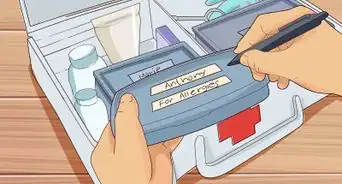

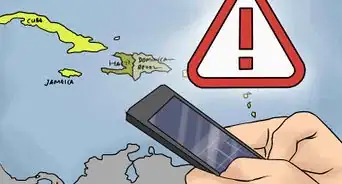

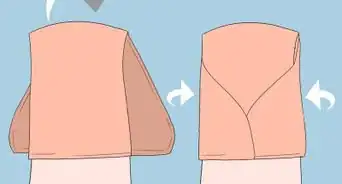

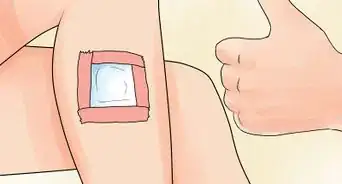

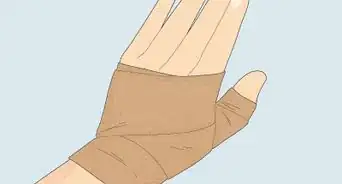
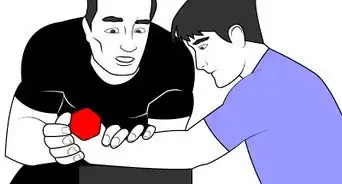


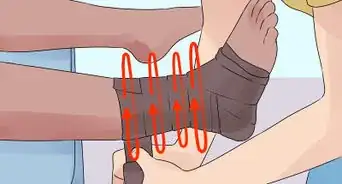
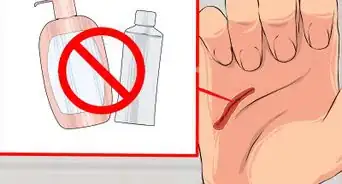








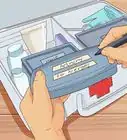


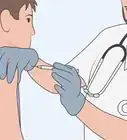



































Medical Disclaimer
The content of this article is not intended to be a substitute for professional medical advice, examination, diagnosis, or treatment. You should always contact your doctor or other qualified healthcare professional before starting, changing, or stopping any kind of health treatment.
Read More...